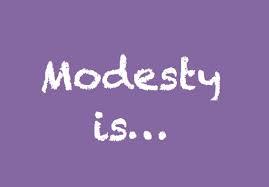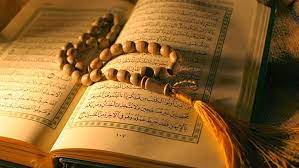 Shakirah Hunter
Shakirah Hunter
Hayaa. Modesty.
We tend to confuse this word and minimise it’s meaning. We have taken Hayaa down to the wearing of a headscarf. Hayaa is so much more than this. Firstly it is one of the greatest gifts of Allah upon us the Muslim Ummah. Nabi صلى الله عليه وسلم has described this quality as the signature trait of Islam. This quality of Haya can be understood in our minds as the instinctual need to cover our bodies and our awrah , but it also has a deep meaning of Hayaa within our relationships with our Rabb and His commands , ourselves and our relationships with others.
This inner guide draws us to want to find the best version of ourselves , it motivates us to be better. It governs our minds our words and our every interaction.
Allah Ta’ala speaks about the garment of Taqwa – meaning the consciousness of Allah Ta’ala, and Sufyan ibn Uyainah (Ra) describes Ḥayāʾ as the most elementary form of taqwá, and the servant does not fear [Allah] until he first experiences Hayaa. How else did the pious reach piety except through ḥayāʾ?”
Nabie صلى الله عليه وسلم has paired hayaa modesty with faith , saying : “Ḥayāʾ and faith have been paired together whereby if one is removed, the other is removed as well.”
This brings us to a deeper look at our own understanding of hayaa. As we live in a world that serves to break down modesty and would like us to believe that it is simply a piece of clot on our heads. The reality is so much deeper. The reality is that Hayaa is the driving force in every single act of faith. It is the manner in which we find closeness to Allah Ta’ala and submit to His every law
In Madaarijus Saalikeen, Hayaa has been described in different ways :
The Haya of guilt when we feel bad over our sins and actions. The Haya of inability . The Haya of awe. The Hayaa of generosity ,the Hayaa of chastity and humility . The Hayaa in love and the Hayaa in servitude and most importantly the Hayaa from one’s own self.
In a world that would like to break down our internal moral compass by focusing us on the actions of others, we have to take back our Hayaa.
In checking our own moral compass we can find our relationship with Allah Ta’ala. We will often find that our Hayaa is affected by our surroundings and we may have begun at a certain point in finding closeness to Allah Ta’ala but slowly with time and the effect of the world around us our level of hayaa depreciates.
This will slowly move from our internal to reflect on our external.
We don our external layer of clothing , as an act of faith that is deeply intertwined with our internal relationship with Allah Ta’ala. We cover our bodies and each one of us finds our selves at different points in their journey to Allah.
We find ourselves quick to judge the level of taqwa expressed by others in their outer garments but we fail to look at our own journey.
The hijaab, the niqaab and the abaya or the jilbaab . We find millions of Muslim woman wearing these at different points of their journey to complete obedience of Allah Ta’ala.
The key is to understand that I have to develop my Hayaa within my relationship with Allah first and foremost whilst ensuring that my journey of modesty in dress is a continuous one. A journey that never stagnates. I should analyse my goalposts and create new ones . If I had begun my journey at a scarf and I slowly lengthened my dress and then changed my dresses to abayas. I should never stop there. I need to continuously work on improving my external and internal hayaa. There are times when we can be completely covered yet we find that out connection to Allah is missing . In order to complete our Hayaa journey we have to understand that it can never be completed. Just as Iman is often tested our Hayaa can be affected by the world around us.







0 Comments